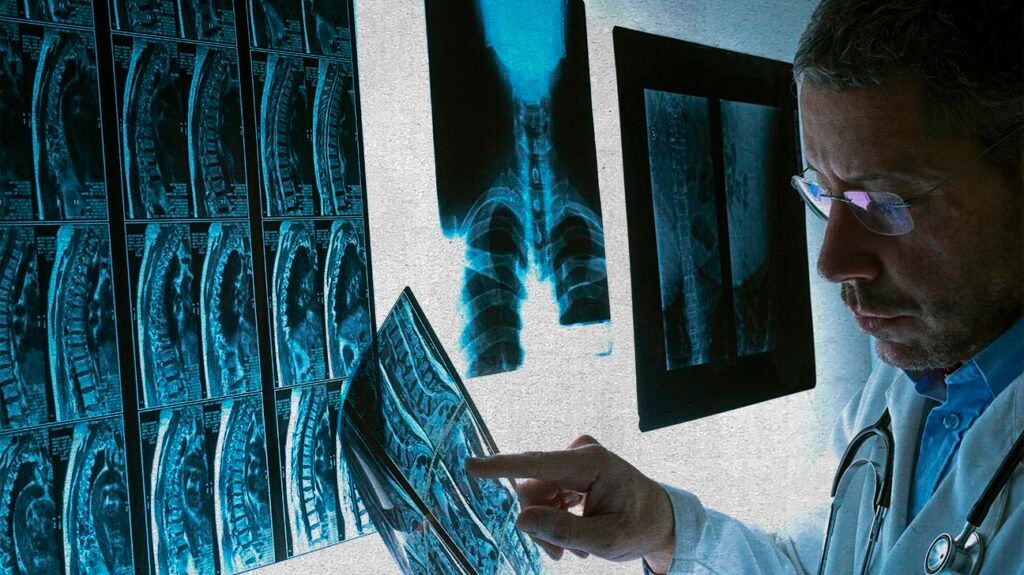Primary types of bone cancer include osteosarcoma, Ewing sarcoma, and chordoma. Secondary bone cancer develops as a result of cancer that has spread from another area of the body.
Doctors broadly divide bone cancer into primary and secondary bone cancers. Secondary cancers are also referred to as bone metastasis.
This article overviews the types of bone cancer and their symptoms and treatments. It also looks at the staging of bone cancer, diagnosis, outlook, and support.

According to the
If cancer develops in the bones, it is usually due to advanced cancer elsewhere in the body that has spread into the bones. This type of bone cancer is called bone metastasis, or secondary bone cancer.
Primary bone cancer is rare. Doctors have identified several types of primary bone cancer:
- osteosarcoma
- Ewing sarcoma
- chondrosarcoma
- spindle cell sarcoma
- chordoma
Doctors also refer to secondary bone cancer as bone metastasis. While any advanced cancer can spread to the bone, the most
Possible symptoms of bone metastasis may include:
- severe pain
- fractures
- broken bones
- spinal compression
Blood tests can also show high levels of calcium from broken-down bone.
Treatment
The medications doctors
- bisphosphonate drugs, such as pamidronate (Aredia)
- zoledronic acid (Zometa)
- denosumab (Xgeva)
Doctors usually administer these drugs intravenously (into a vein though an IV) or subcutaneously (under the skin).
Osteosarcoma is also known as osteogenic sarcoma. It is the most
According to the
This type of bone cancer
Symptoms
People may not have significant symptoms for weeks or months as the cancer starts to form.
The first main symptom of osteosarcoma is often bone pain, usually during activity. The resulting pain may cause a limp.
Treatment
The
In certain cases, surgery can treat the cancer. In other instances, a person may first require chemotherapy if the bone cancer cells show features of advanced cancer.
Another option is to provide chemotherapy before surgery or vice versa and use further chemotherapy treatments after surgery.
Chondrosarcoma is the
The most common areas where chondrosarcoma occurs are the pelvis, legs, and arms. However, some may originate in the:
- trachea
- larynx
- chest wall
- shoulder blades
- ribs
- skull
While uncommon, doctors further divide chondrosarcomas into three subtypes. Each chondrosarcoma type has unique features when viewed under a microscope.
Symptoms
People with chondrosarcomas have
Treatment
Cancer specialists treat chondrosarcomas with one of
- surgery
- chemotherapy
- radiation therapy
The treatment choice depends on the location and grade of cancer. Doctors usually reserve radiation therapy if surgery is not successful in removing high grade chondrosarcomas.
Among children, teenagers, and young adults, Ewing sarcoma is the
Ewing sarcoma may form in the following bones:
- pelvic
- chest wall
- spinal
- long bones of the legs
Symptoms
People with Ewing sarcoma have pain, stiffness, or swelling locally for a few weeks or months.
Depending on its location, other symptoms may arise. For example, back pain may occur in people with Ewing sarcoma of the pelvic bone.
Treatment
Treatment options for Ewing sarcoma include:
- chemotherapy
- radiotherapy
- surgery
Treatments tend to be limited for recurring Ewing sarcoma, which can decrease the likelihood of a positive outcome.
Spindle cell sarcoma occurs in soft tissue or bone cells. It is a
Symptoms
The symptoms of spindle cell sarcoma may
According to the Bone Cancer Research Trust, commonly reported symptoms include:
- fracture
- swelling
- a lump or mass
- tenderness in the area
- reduced mobility of the area
- fatigue
- malaise
Treatment
Treatment options for spindle cell sarcoma include chemotherapy followed by surgery and additional chemotherapy after surgery.
Another
Chordomas usually affect people 40–60 years old, but there are some reports of it in children and older people.
Symptoms
Symptoms of chordoma depend on the location of the cancer. For example:
Treatment
Treating chordomas requires surgery to remove the cancer, followed by high dose radiation therapy due to its high recurrence rate.
Before doctors can discuss a person’s outlook and treatment plan, they need to
To stage the cancer, doctors consider:
- the likelihood of the cancer growing and spreading
- the extent of its growth or spreading outside of the bone
- the presence of metastases
- the size of the tumor
- any affected lymph nodes
- the appearance of the cells under a microscope
Different types of bone cancer have varying causes. While experts have identified some causes of bone cancer, how these factors affect bone cells is not yet certain.
Some risk factors for bone cancer may
- smoking
- older age
- previous radiation therapy
Certain genes may encourage bone cells to become cancerous. The
Symptoms and results of physical exams and imaging tests can help a doctor diagnose bone cancer.
In the majority of cases, a doctor uses
Other tests that might help confirm a diagnosis of bone cancer include blood tests. High levels of alkaline phosphatase and lactate dehydrogenase can suggest advanced cancers.
According to the
- the type of bone cancer
- the location of the tumor
- if the cancer has spread
- when a person receives a diagnosis
- a person’s age and overall health
- how well the cancer responds to treatment
Advanced cancers causing bone metastases may have a limited outlook but are treatable in the
People can discuss their diagnosis and treatment with their doctor or cancer specialist. Support systems may also come from family and friends.
Other sources of support are available through the
Bone cancer originating in bone is rare. However, advanced cancers may cause bone metastases. Different types of bone cancers affect various bones in the body but have overlapping symptoms and treatments.
Before doctors can provide a person with an outlook and treatment plan, they stage the cancer based on the location of the tumor and the spread of the cancer, among other factors.
Experts have identified certain risk factors for bone cancer, such as smoking and previous radiation therapy.
Doctors consider a person’s symptoms and results from physical, imaging, and blood tests to diagnose bone cancer. They recommend treatment based on the type and stage of cancer. Treatment may include chemotherapy, radiation therapy, or surgery.
People can speak with their doctor, family or friends, or other organizations for support in managing a diagnosis and treatment plan.


